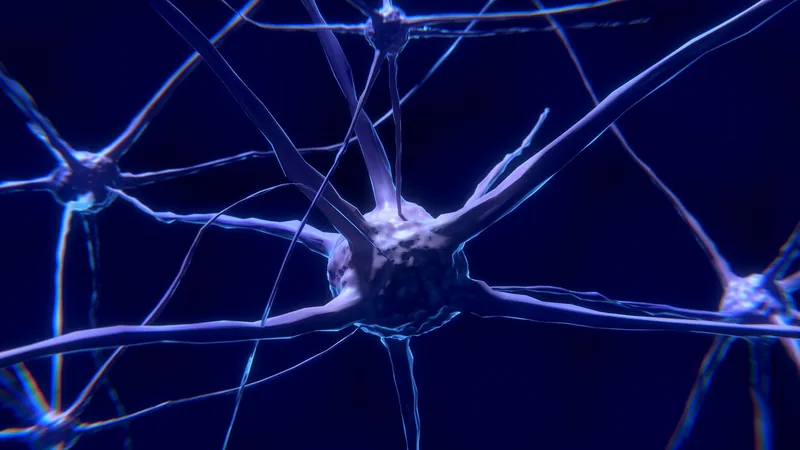
Unlocking the Secrets of Neuroprotection: Could PI31 Be Key to Fighting Neurodegenerative Diseases?
2025-09-15
Author: Nur
A Groundbreaking Discovery in Neurodegeneration
Communication breakdown among neurons is a hallmark of neurodegenerative diseases. Before brain cells perish, the crucial systems that facilitate their communication—especially the clearance of protein waste—begin to falter.
When these cleaning processes fail, signal transmission within the brain is compromised, impacting everything from reasoning and language to basic motor functions.
The Power of PI31
A revolutionary study recently published in PNAS reveals a potential game-changer in combating this decline: the protein PI31. Researchers demonstrated that increasing PI31 levels can prevent neuronal degeneration and restore synaptic function, significantly extending the lifespans of fly and mouse models resembling rare genetic disorders akin to Parkinson's disease.
With implications for Alzheimer's treatment and strategies to stave off age-related cognitive decline, this research could usher in a new era of neuroprotective therapies.
Rethinking Alzheimer's: Are Protein Clumps the Real Culprits?
For decades, the narrative surrounding neurodegenerative diseases has emphasized the danger of protein aggregates—visible clumps like beta-amyloid plaques and tau tangles. Initially thought to directly cause neuron death, many therapies targeting these plaques have failed to deliver significant clinical improvements.
Hermann Steller, head of the Strang Laboratory of Apoptosis and Cancer Biology, suggests these aggregates may actually be a symptom, not the root cause of neurodegeneration.
The Role of Proteasomes
Steller's past research implies that neurodegeneration kicks off not with protein clumps but when the proteasomes—cellular machinery responsible for degrading proteins—fail to reach synapses. This delay results in waste buildup and disrupted communication.
He identified PI31 as a pivotal player in ensuring proteasomes arrive at synapses on time. Without PI31, the transport system stalls, leading to neurodegenerative symptoms.
Could PI31 Hold the Key to New Therapies?
To explore the therapeutic potential of boosting PI31, Steller's team focused on FBXO7, a gene linked to early-onset Parkinson's syndrome. In fruit fly models, reducing the fly counterpart of FBXO7 resulted in severe motor dysfunction and impaired proteasome transport.
However, adding extra copies of PI31 reversed these symptoms, restoring normal proteasome movement. When researchers transitioned to FBXO7-deficient mice, even modest increases in PI31 levels remarkably decreased neuronal degeneration and enhanced motor function.
Promising Future Ahead
As the research progresses, the next phase will test whether augmenting PI31 can also maintain cognitive functions in aging mice. If successful, this could pave the way for human therapies.
Steller's recent collaboration indicates that humans with rare mutations in the PI31 gene face a range of neurodegenerative conditions, emphasizing the potential of PI31-targeted treatments.
The anticipation is high—lessons learned from rare diseases could lead to broader strategies against Alzheimer’s and similar diseases, potentially slowing down cognitive decline as we age. "We’re excited that our findings could translate beyond animal models, giving hope for age-related cognitive resilience in humans," Steller concludes.





 Brasil (PT)
Brasil (PT)
 Canada (EN)
Canada (EN)
 Chile (ES)
Chile (ES)
 Česko (CS)
Česko (CS)
 대한민국 (KO)
대한민국 (KO)
 España (ES)
España (ES)
 France (FR)
France (FR)
 Hong Kong (EN)
Hong Kong (EN)
 Italia (IT)
Italia (IT)
 日本 (JA)
日本 (JA)
 Magyarország (HU)
Magyarország (HU)
 Norge (NO)
Norge (NO)
 Polska (PL)
Polska (PL)
 Schweiz (DE)
Schweiz (DE)
 Singapore (EN)
Singapore (EN)
 Sverige (SV)
Sverige (SV)
 Suomi (FI)
Suomi (FI)
 Türkiye (TR)
Türkiye (TR)
 الإمارات العربية المتحدة (AR)
الإمارات العربية المتحدة (AR)